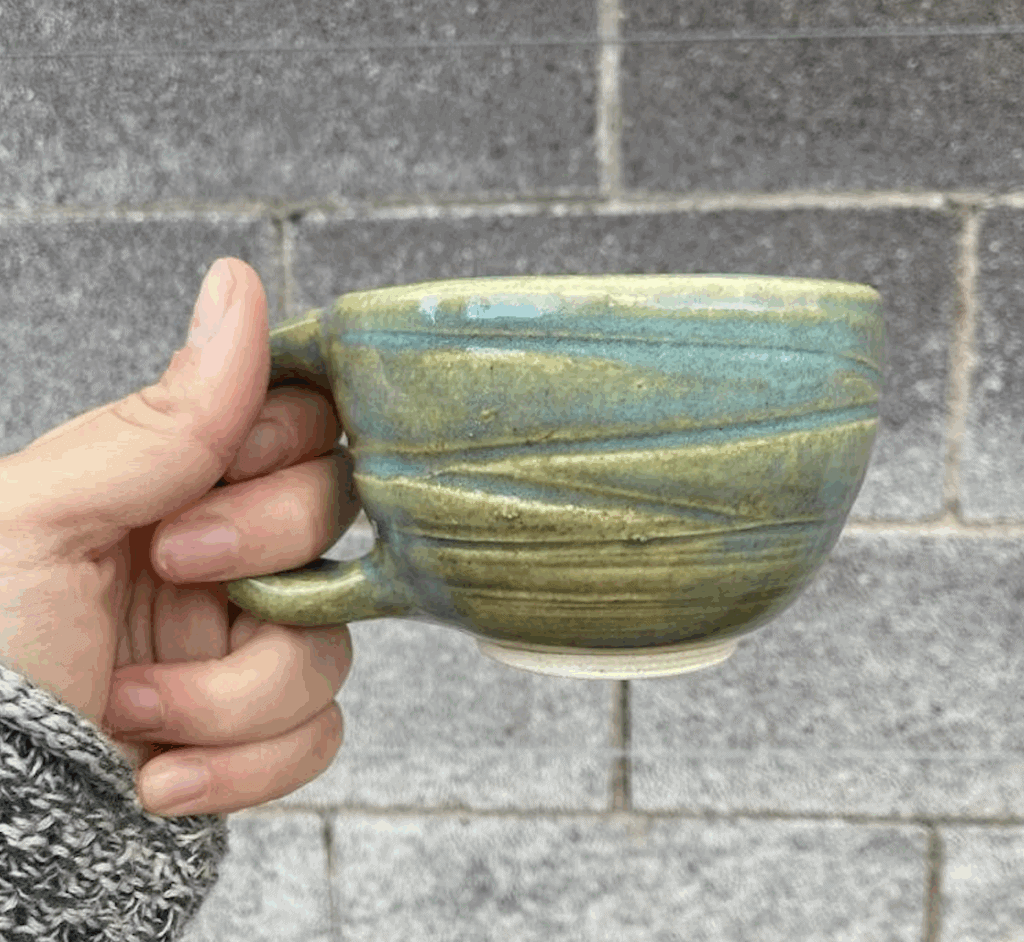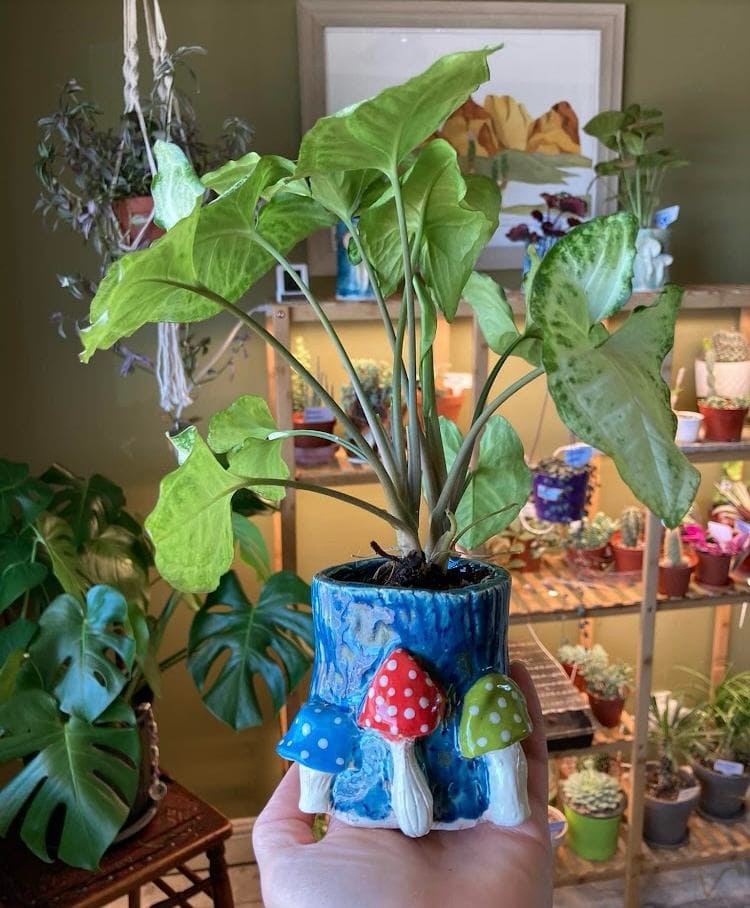Do you want to know where to sell crafts and handmade goods? Maybe you have a hobby like knitting, making candles, painting, or jewelry, and now you’re wondering if there’s a way to turn it into a side hustle or even a full-time business. If you love crafting and DIY projects, then you may be…
Do you want to know where to sell crafts and handmade goods?
Maybe you have a hobby like knitting, making candles, painting, or jewelry, and now you’re wondering if there’s a way to turn it into a side hustle or even a full-time business.
If you love crafting and DIY projects, then you may be interested in making extra money by selling them.
Over the years, I’ve talked to so many people who have done just that – sold crafts online, at markets, and in local shops. I am big on crafts (and I have tried a bunch!), so it’s always a fun thing to think about. So today, I want to walk you through the best places to sell crafts and handmade goods.
Where To Sell Crafts and Handmade Goods
Below are the best places to sell crafts and handmade goods.
Recommended reading:

1. Etsy
Etsy is one of the most popular places to sell handmade items, and people specifically go shopping on Etsy to find crafts made by people. And, I know many people who just window-shop on Etsy and look for handmade things to buy (cough, cough … me).
There are pros and cons to selling on Etsy. Pros of Etsy include that the site has a large, built-in audience and it’s easy to set up your online shop. Cons of Etsy include listing and transaction fees, and there is high competition in popular categories so it can be hard sometimes for potential customers to find your listing (you need to be really good at Etsy SEO!).
Recommended reading: 16 Best Things To Sell On Etsy To Make Money
2. Amazon Handmade
Amazon Handmade is a curated section of Amazon that only showcases handcrafted items. This is the perfect marketplace for people selling their handmade products.
I actually did not know that this existed until recently. My sister bought a mug from Amazon Handmade and it was super beautiful! And, it shipped super fast because it’s Amazon, which is nice.
If you’re a maker ready to sell and want access to a lot of customers, then Amazon Handmade is possibly a great option. The pros of selling on Amazon Handmade include getting access to Amazon’s customer base, a trusted buying experience for customers (people trust Amazon and shop on this site all the time!), and even dedicated support for handmade sellers. Cons include a lengthy and selective application process, less branding and customization on Amazon’s site, and the requirement to keep up with Amazon’s strict guidelines.
3. eBay
EBay is an online marketplace for both new and used goods that people from around the world use all the time, which means you can sell your handmade crafts and even craft supplies on eBay. While I have not bought handmade goods on eBay, many others have and it can be a site to at least test a listing on.
Known for auctions and fixed-price listings, eBay is also great for sellers with one-of-a-kind or collectible handmade items.
The benefits of selling your handmade items on eBay include that there are millions of active buyers on this site, and there’s a fairly quick and easy setup. The cons of selling on eBay include selling fees and that there can be high competition depending on what you’re selling. I also feel that there may not be as many people who simply browse on eBay for handmade items like they do with other sites.
4. Shopify
Shopify is an e-commerce platform where you can create your own online store. You get full control over everything, including your site design and what is sold on your site.
The benefits of selling on Shopify include full control over your storefront, built-in tools for marketing, inventory, shipping, and analytics, along with Shopify integration with social media and other sales channels. The downfalls of Shopify include a monthly subscription fee, you’re responsible for getting traffic to your Shopify site (this can be hard, especially in the beginning), and you have to set everything up from start to finish.
If you plan on selling a lot of items, though, Shopify can be a good place to have your online store because you can typically keep more of the income that you earn compared to a site like Etsy or eBay, where you have to pay a lot of different fees.
Recommended reading: How To Make $1,000+ A Month Selling Stickers Online

5. Local art and handmade stores
If you’re a crafty person, you’ve probably been to a local handmade goods store that sells items from different creators. This is a great way to get your items in a brick-and-mortar without having to actually fund your own storefront.
The benefits of selling at a local store include getting access to customers right away, and there’s no need to manage your own shop or attend farmers markets. Cons include the profit usually being split between the store and you.
Local handmade stores are one of my favorite stores to shop at – I love going in and browsing, and I usually end up buying something homemade. They typically sell a lot of different items too – such as jewelry, art, clothing, candles, books, stuffed animals, stickers, and more.

6. Gift shops
Gift shops usually have a space that showcases local, handmade items.
These gift shops are usually found in malls, touristy areas, hotels, hospitals, and even airports. If you’re someone who sells items that are good for birthdays, holiday gifts, and travel souvenirs, gift shops may be the place to sell your handmade crafts.
The benefits of selling in gift shops include a lot of potential customers (there are typically lots of browsers at gift shops!) and not having to manage a store. The negatives include profit margins being lower due to consignment pricing.
7. Coffee shops
Small, independent coffee shops sometimes have an area where they support local artists and makers. My favorite local coffee shop has this, and they feature creators’ handmade candles, bookmarks, art, jewelry, and more.
Coffee shops typically have a lot of people going in and out quickly, so this is a great option for crafters with lower-priced items like prints, jewelry, candles, or cards.
Independent coffee shops get a ton of foot traffic with community-oriented customers who are looking to support local and handmade too.
I have personally bought a homemade craft from a coffee shop, and it hangs on a family member’s wall because they love it so much – so I think it’s a great place to reach out to and see if you can sell your items there.
8. Craft fairs and art fairs
Craft fairs and art fairs are organized events where artists can sell their work in person. We have a massive art fair where we live, and every year it attracts over 100,000 people from all over the country. This means artists are getting a lot of face-to-face interaction with customers and building relationships with their customers.
There are also smaller craft fairs, such as ones at local schools around the holidays, that are more meant for locals and are easier to get a booth at.
The benefits of selling at art fairs include direct connection with customers and immediate payment from customers. The cons of selling at fairs include the time it takes to travel to the art fair and set up, booth fees, and sales depending on the weather (for example, it would stink if it rained the whole time), location, and the number of interested buyers.

9. Farmers markets and flea markets
Farmers markets and flea markets are community events – great for local makers selling their crafts.
The benefits of selling at farmers and flea markets include that there are typically a lot of customers and it’s usually easy to get a booth. The cons include time to set up and tear down each event and events being weather-dependent.
I go to my local farmers market all the time, and I love seeing all of the handmade booths!
10. Cratejoy
Cratejoy is an e-commerce platform where you can sell subscription boxes. Artists and crafters can create themed or niche boxes that may include soaps, skincare items, embroidered items, stationery, jewelry, and so much more.
The pros of selling on Cratejoy include a built-in audience searching for subscription boxes, tools to manage billing and shipping, and recurring sales, which help with making a stable income month after month. The cons of having a monthly subscription box are that it can be a lot of work (where you have to create a lot of products month after month), platform fees, and shipping fees.
11. Social media
Social media can be a great way to sell your handmade items, especially on social media platforms like Instagram and TikTok. You can link to your shop in your bio, or even take orders via email.
The pros of selling on social media include it being free to start right away, direct engagement with potential buyers, and taking videos of making your handmade items, which can lead to a lot of views on social media. Cons include it requiring time and consistency to build an audience, having to deal with algorithms, and managing messages, comments, and orders.
12. Pop-up shop
Pop-up shops are short-term retail setups in borrowed space (usually boutiques, markets, or special events). I don’t feel like these are as common because they are a lot more work and can cost a lot of money to set up.
The main benefit of selling at a pop-up shop is that you can have full control over your store and possibly test if you get enough business to open up a permanent store. The cons may include costs being high for a short-term space and the time it takes to set everything up.
Frequently Asked Questions
Below are answers to common questions about selling crafts and handmade goods.
Where is the best place to sell your crafts?
Honestly, the best place to sell your crafts really depends on what you want and how much time you’re able to put into it. If you want something quick to set up with an audience already searching for handmade goods, Etsy is a great place to start. On the other hand, if you like the idea of having full control over your store, such as the design and everything else that is sold, then Shopify might be a better fit.
If you love talking to customers face-to-face, selling in person at a local farmers market could be more your style. And truthfully, most crafters I know do a little bit of everything – they might sell both online and at local events to reach more people and see what works best.
What is the best-selling platform for crafts?
The best-selling platform for crafts depends on who you’re trying to market to and how much you want to sell. For example, Etsy is a great place to sell your crafts to people all over the world, while a local gift shop is a great idea if you prefer selling locally. There are pros and cons to every place that sells crafts, and it depends on which method interests you personally.
What are the best places to sell handmade jewelry?
The best places to sell handmade jewelry depend on what you’re selling and how much social interaction you want with customers. Etsy is a great site, as people are looking for unique artisan pieces, whereas social media can be a great idea because you can share a behind-the-scenes view of your business and have people connect with you that way.
Where to sell handmade items locally?
The best places to sell handmade items locally include craft fairs, art markets, farmers markets, small coffee shops, or gift shops.
What is the most profitable craft to sell?
The most profitable crafts to sell include handmade jewelry, home decor, candles and soaps, and digital products and printables. While I know that many people love to knit and crochet, it can be time-consuming, and nice yarn is expensive too, so it’s not always very profitable unless you are comfortable with setting your price higher.
Is there a better alternative to Etsy?
There are several alternatives to selling on Etsy, such as Shopify, Facebook Marketplace, and Amazon Handmade. I think more and more creators are moving away from Etsy due to Etsy increasing their fees and also the amount of competition lately on the site. But, I still shop on Etsy all the time, so I do think it’s a great site overall for a craft business.
Best Places To Sell Crafts and Handmade Goods – Summary
I hope you enjoyed my article on the best places to sell crafts and handmade goods.
I am a huge crafter and I love handmade goods. I have bought items from most of the places listed above over the years. I don’t think there is one best option, as everyone is different!
There are many places to sell crafts and handmade goods, and where you choose to sell your items depends on many things. If you love crafting and think you have something that would sell, this could be a great side hustle!
Are you interested in selling crafts and handmade goods?
Recommended reading:
